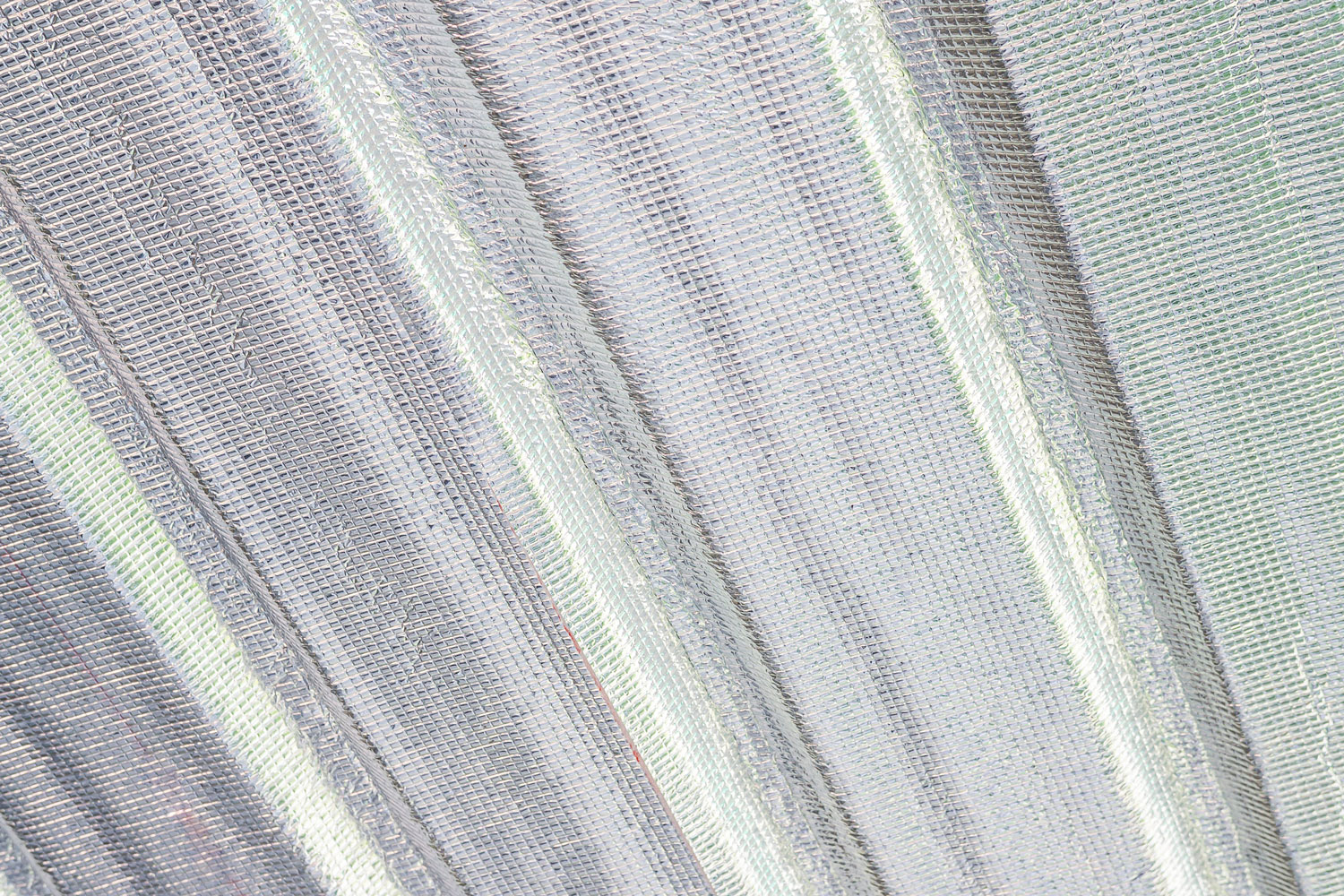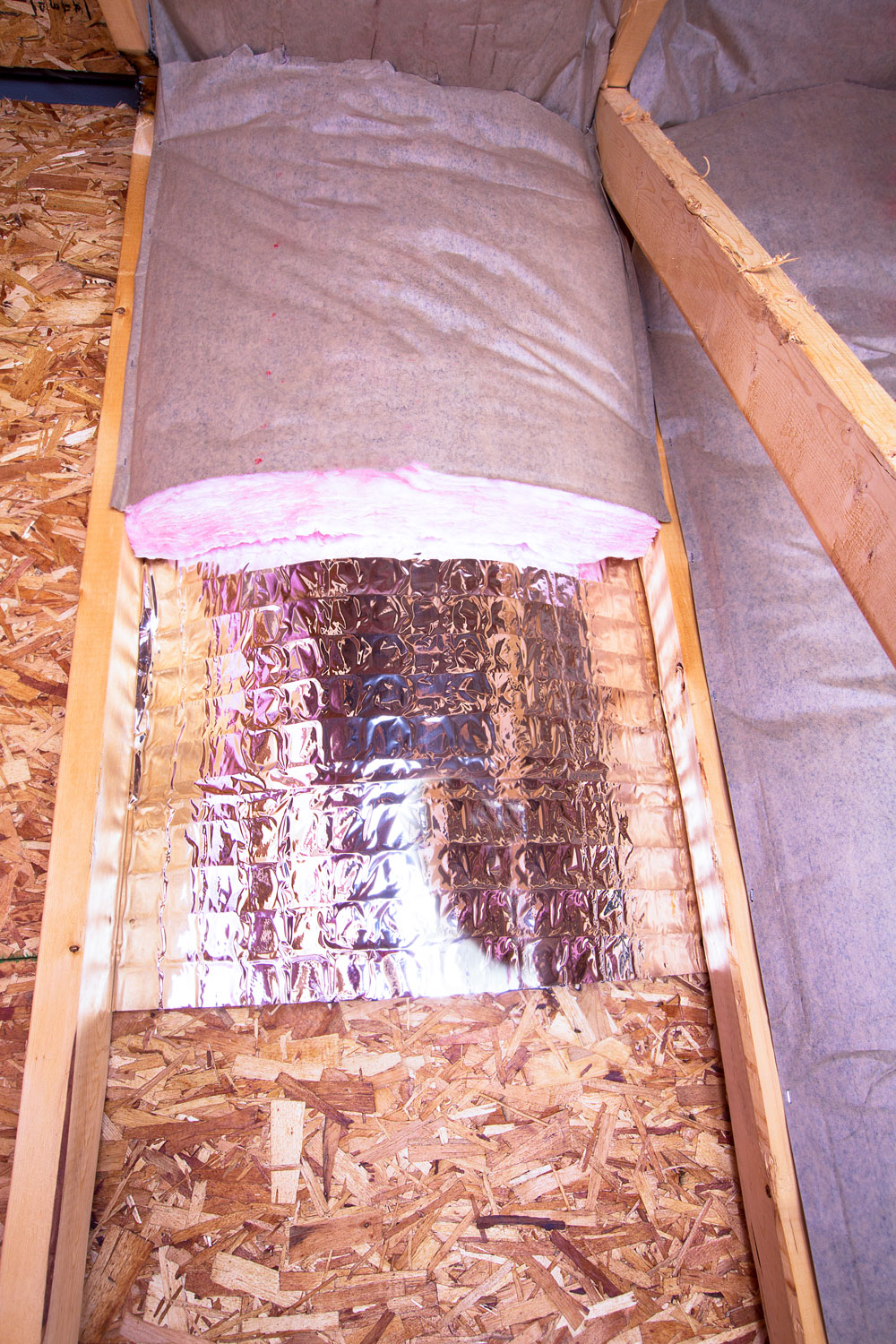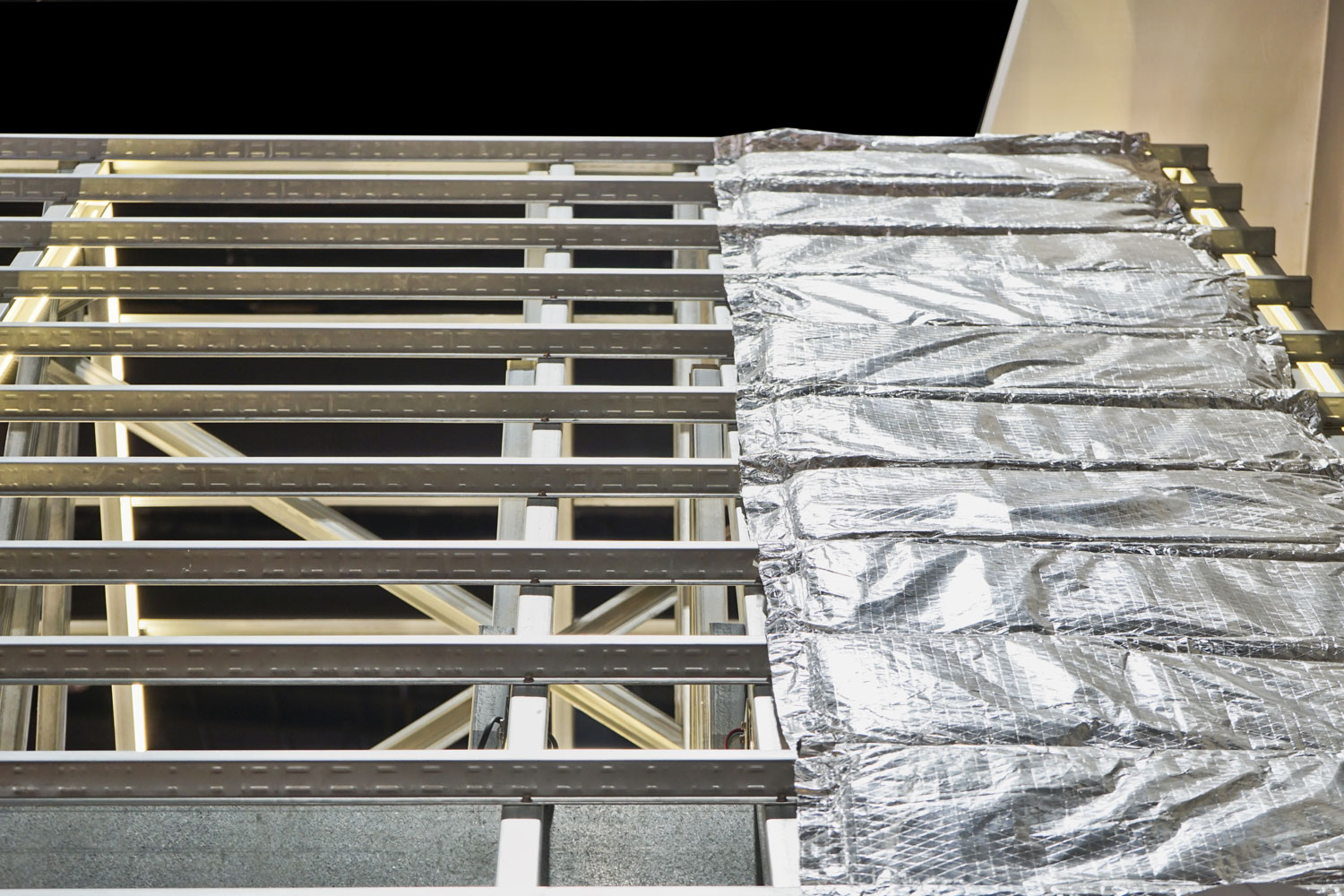Radiant barriers assist homeowners by blocking summer heat gain, which reduces energy costs. But take note that different models use distinct materials that supply unique advantages and shortcomings. Now you’re wondering about the different types of radiant barriers. We researched to find the different materials used in these products and here’s what we found.
Some of the relatively common types of radiant barriers on the market often use the following materials:
- Foil
- Plywood
- Silver
Homeowners should purchase their radiant barriers from trustworthy brands, which may include (but aren’t limited to) the following:
- RadiantGUARD
- Fi-Foil
- Attic Foil
It’s important to understand the inherent features and traits of each type of radiant barrier material to enhance the value gained from the product. Keep reading as we talk about these radiant barriers in greater detail. We’ll also tackle some reliable brands to help improve your shopping experience.
![Radiant barrier insulation on the attic, 3 Types Of Radiant Barrier [And Popular Brands]](https://hvacseer.com/wp-content/uploads/2022/02/3-Types-Of-Radiant-Barrier-And-Popular-Brands.png)
What Is The Difference Between Radiant Barrier Vs. Insulation?
Although often interchanged, radiant barriers are different from insulating agents. A radiant barrier, as its name implies, blocks and reflects heat to its source. On the other hand, insulation reduces heat gain and slows down the rise in temperature in indoor spaces.

Additionally, insulation has dissimilar R-values based on the materials used. However, radiant barriers often have little to no R-values.
What Are 3 Examples Of Radiant Barriers?

Different radiant barriers typically use dissimilar materials to block heat from getting into homes. Some items used in creating these heat barriers are:
Foil
Many radiant barriers usually use foil, particularly aluminum, to block radiant heat. This material works by using its shiny, metallic properties to reflect thermal infrared radiation. It also has low emissivity, which is the measurement used to read an object’s ability to produce infrared energy.
Quality foil radiant barriers may help block up to 96% of heat and return it to its source. Homeowners should note that it doesn’t mean that this barricade can reduce their energy bills by up to 96%. Nonetheless, these sheets can help make indoor living more comfortable than usual, especially in the summer.
Check out this aluminum foil radiant barrier on Amazon.
Plywood
Also called radiant barrier sheathing, this type of heat shield generally uses plywood or engineered wood panels attached to thin yet reflective aluminum layers. The use of radiant barrier sheathing may help reduce the temperature of the adjacent space by up to 30 degrees Fahrenheit.
Property owners may also expect a significant reduction in energy costs with this radiant barrier setup. Expect to see this material to produce a payback in about 1 to 2 years of use.
Silver
Often called radiant barrier chips, this type of thermal barricade for homes typically uses silver as its main reflective component. These ‘chips’ can be ideal for attics or roofs with unique designs, thanks to their relatively small dimensions. In turn, homeowners can place these barriers in hard-to-reach strategic places to help reduce the heat gain in specific areas.
Keep in mind that silver is one of the most potent heat reflectors among metals. It is also a good heat conductor, which might make it quite hot to the touch.
Bonus: Metal Roof
Aside from the typical types of radiant barriers, some homeowners may opt to install metal roofs to experience similar heat-reflecting outcomes. Metal, such as aluminum and zinc, generally have low thermal mass, meaning that they do well in reflecting heat and light as opposed to absorbing them.
Take note that the degree to which a metal roof can retain and/or reflect heat generally depends on the specific material, along with other factors. Some of these elements that can affect heat gain or reduction are:
- The type of finish
- The direction of the sun
- Color choice
How Do I Choose A Radiant Barrier?

As with many other products on the market, selecting the best radiant barrier often demands thinking about its manufacturer. Some radiant barrier brands already have established names in the industry, making their products to be more superior choices than their competitors.
Some radiant barrier brands to ponder upon are:
RadiantGUARD
Headquartered in Frisco, Texas, RadiantGUARD has a mission to provide quality products to increase comfort and quality of life in living spaces. The company retails items like reflective insulation, radiant barriers, and other products related to packaging.
Additionally, RadiantGUARD primarily offers two radiant barrier models: the Xtreme and Ultima-FOIL. The Xtreme radiant barrier uses a 7-layer setup, wherein it has two sheets of reflective metalized film in between the company’s proprietary coating.
As for the Ultima-FOIL, it takes advantage of over 99% pure aluminum to reflect heat and light. It is also a tear-resistant product, which may make it a good choice for regions with windy climates.
Fi-Foil
Many property owners trust Fi-Foil for their radiant barrier needs with good reason. It is a leader in providing insulation technologies with over 30 years of experience in supplying buildings with radiant barriers and other insulating materials.
This company mainly offers two radiant barrier products: the Silver Shield and Radiant Shield. The Silver Shield is the brand’s premium offering for it can help reduce up to 30 degrees Fahrenheit of attic temperature in the summer.
As for the Radiant Shield, this product can be ideal for budget-conscious customers. According to the company, this radiant barrier has a competitive pricing structure. It can also help enhance comfort in different areas around properties, including garages and porches.
AtticFoil
AtticFoil is a radiant barrier company headquartered in Argyle, Texas. This maker of heat-reflecting sheets supplies its products to other radiant barrier companies for rebranding purposes. Companies like Arma Foil, Diamond Shield, and eShield use radiant barriers from AtticFoil but are renamed to their respective brands.
Interested customers may also request this radiant barrier manufacturer for a sample before finalizing their purchasing decisions. Moreover, AtticFoil also offers other products like spray foam insulation and other energy efficiency-focused improvements for residences and commercial establishments.
How Do You Install Radiant Barrier?

Different radiant barrier installation methods exist. In this section, you'll learn how to take advantage of the staple-up or open ridge technique. Also, it might be best to have an assistant help you with this task. Some radiant barriers, particularly foil sheets, can be quite difficult to maneuver alone because of their massive dimensions.
Also, you’ll most likely install the radiant barrier in the attic and under the roof. It might be dusty in that area, so it’s best to wear protective gear like a respirator and long-sleeved coating.
After finding a colleague and making the necessary safety precautions, you can continue by following these steps:
What You’ll Need
- Staple gun
- Radiant barrier sheets
- Utility knife
Step-by-Step Guide
- Stretch a radiant barrier sheet and staple it after every rafter. Using three or four staples per pass should suffice.
- Repeat the previous step for the other sheets.
- Cut portions of the material using the utility knife to prevent the sheet from folding when going through obstructions like vent pipes.
You can also watch the video below to gain additional insight about this installation process:
If you’re wondering about how long it takes to insulate a new house, don’t forget to read our post on that topic.
Are Radiant Barriers Worth It?
Radiant barriers can be an excellent addition to homes and business establishments in locales experiencing frequent hot weather. With a quality heat shield installed, the product can help improve the property’s energy efficiency by approximately 5% to 10%.
Some properties in states like Florida might appreciate the most benefits from radiant barriers. For example, the typical Florida home is paying approximately $1,900 per year in electricity costs. Installing a radiant barrier can help the homeowner save up to $190 per year or $15.83 per month.
It’s important to note that the costs vs. savings in installing radiant barriers can depend on different elements. Single-sided radiant barriers are often less expensive than their double-sided counterparts. But double-sided heat shields generally provide better performance in reducing heat gain than single-sided models.
At this point, you might also be wondering about the costs for insulating a 1,200-square foot house. If so, you can read our post on that topic to find the answer.
Final Words
![Radiant barrier insulation on the attic, 3 Types Of Radiant Barrier [And Popular Brands]](https://hvacseer.com/wp-content/uploads/2022/02/Radiant-barrier-insulation-on-the-attic.jpg)
Lot owners can estimate the performance of radiant barriers based on their primary materials. Some of the relatively common types of these heat shields include those using foil, plywood, and silver. Additionally, proper installation is vital to ensure that the barrier performs well.

